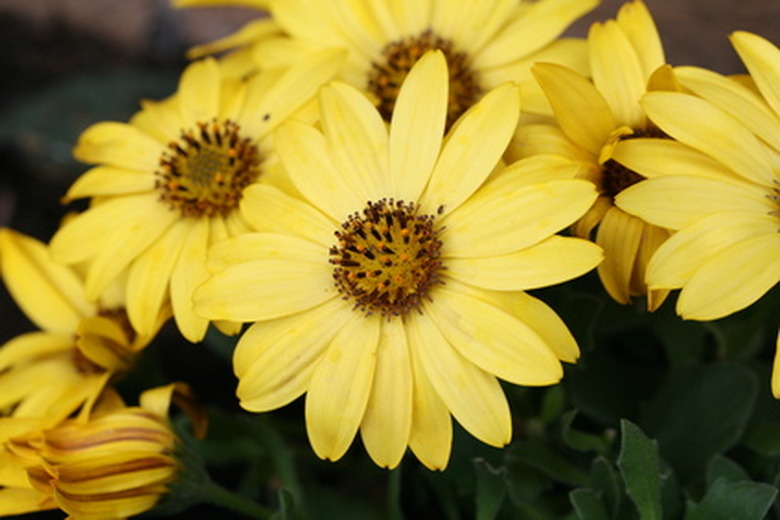Osteospermum Plant Care
Osteospermum, also known as cape marigold or African daisy, produces daisy-like flowers with dark centers in shades of white, yellow, pink, purple and blue. Native to South Africa, the plant tolerates heat but slows down in extremely hot or humid conditions. Osteospermum blooms in summer through fall, and is perfect for natural gardens throughout the United States. Commonly grown as an annual, the plant may perform as a perennial in USDA hardiness zones 9 through 11.
Site and Soil
Osteospermum requires a planting location that receives full sun, although it tolerates partial shade in very hot climates. Well-drained soil with average to low fertility provides the best growing medium. Osteospermum plant also performs well in outdoor containers filled with well-drained potting soil when placed in a sunny position. Garden plants require 8 to 12 inches of space between plantings to allow enough room for mature growth.
- Osteospermum, also known as cape marigold or African daisy, produces daisy-like flowers with dark centers in shades of white, yellow, pink, purple and blue.
- Osteospermum requires a planting location that receives full sun, although it tolerates partial shade in very hot climates.
Watering Requirements
Regular watering prevents osteospermum plant from drying out. Weekly applications provide the best results, although the plant may require more frequent watering when planted in a container or during periods of extreme drought. Water twice per week for the first two weeks after planting to help initiate new growth and encourage the roots to become established. Keep water off of the leaves to prevent fungal diseases. For the best results, apply water directly to the soil and avoid over-head watering.
Fertilizing Requirements
Osteospermum plant requires supplemental fertilization to promote flower formation and benefits from heavy doses of fertilizer throughout the growing season. Weekly applications of a bloom-boosting, water-soluble fertilizer keeps garden plants healthy. Container plants require the use of a slow-release granular fertilizer according to the manufacturer's instructions to encourage growth and blooming.
- Regular watering prevents osteospermum plant from drying out.
- Weekly applications provide the best results, although the plant may require more frequent watering when planted in a container or during periods of extreme drought.
Dead-heading and Pruning
Removing spent or faded osteospermum flowers, a process known as dead-heading, keeps the plant blooming and healthy. During very hot weather, the plant may begin to produce smaller flowers. In this case, shearing the plant back by several inches and giving a dose of water-soluble fertilizer ensures further blooming when temperatures drop. Cut plants back in early spring before new growth begins to encourage the formation of new side shoots and fresh growth.
Winter Care
Container-grown osteospermum plants brought indoors during winter may perform as perennials. In most cases, however, gardeners treat the plants as annuals, allowing them to die back when temperatures drop and replant from seed the following spring. If over-wintering indoors, plants require a warm, sunny place to live and weekly applications of water. Osteospermum grown in USDA hardiness zones 9 through 11 may survive winter in the ground if watered regularly. No supplemental fertilizer is needed during winter.
- Removing spent or faded osteospermum flowers, a process known as dead-heading, keeps the plant blooming and healthy.
Propagation
Propagation of osteospermum by seed provides the best results. Seeds sown indoors six to eight weeks before the last frost of winter germinate in about two weeks when provided with temperatures of 60 to 65 degrees Fahrenheit. Once the seedlings have emerged and all danger of frost has passed, they are transplanted in the garden or planted in containers and placed outdoors in a sunny spot.
References
- Cornell University Flower Growing Guides: Osteospermum
- Osteopermum.com: Plant Care
- "Indiana Gardener's Guide"; Jo Ellen Meyers Sharp, Tom Tyler; 2004
